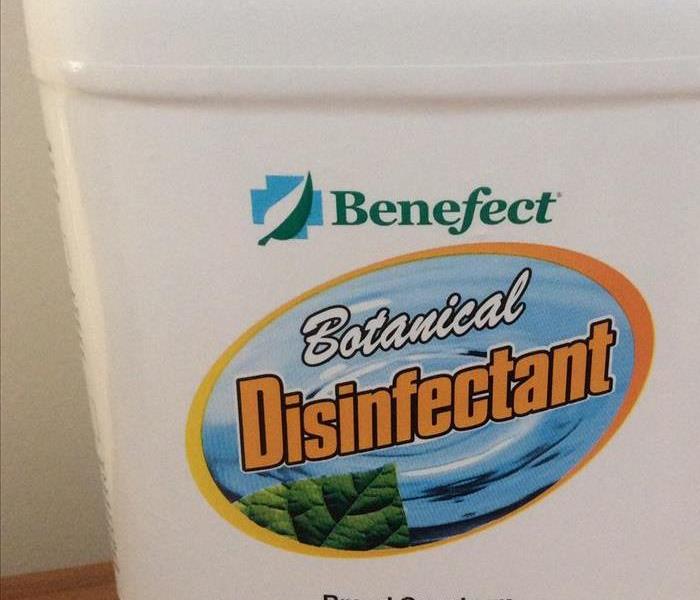Recent Cleaning Posts
A Fresh Start: School Cleaning Tips from Restoration Experts
7/4/2024 (Permalink)
 By following these school cleaning tips, you can help create a clean and healthy environment that promotes learning and well-being for students.
By following these school cleaning tips, you can help create a clean and healthy environment that promotes learning and well-being for students.
Schools are bustling hubs of activity, with hundreds of students and staff passing through their doors every day. Maintaining a clean and healthy environment is crucial to ensure everyone's well-being. As a leading restoration company, we understand the importance of cleanliness, especially in high-traffic areas like schools in Chestnut Hill, MA. Here are some essential school cleaning tips to help ensure a safe and healthy learning environment:
Develop a Cleaning Plan
Create a comprehensive cleaning plan that outlines daily, weekly, and monthly cleaning tasks. Assign responsibilities to staff members or cleaning crews to ensure all areas are covered.
Use the Right Products
Choose cleaning products that are effective against a wide range of germs and viruses. Look for products approved by the Environmental Protection Agency (EPA) for use against COVID-19 and other pathogens.
Focus on High-Touch Areas
Pay special attention to high-touch areas such as door handles, light switches, desks, and cafeteria tables. These areas should be cleaned and disinfected frequently throughout the day.
Promote Hand Hygiene
Place hand sanitizer stations in key locations throughout the school, such as near entrances, in classrooms, and in the cafeteria. Encourage students and staff to practice regular hand hygiene.
Provide Training
Ensure that cleaning staff are properly trained on the use of cleaning products and equipment. Provide refresher training as needed to ensure they are following best practices.
Use Appropriate PPE
Provide cleaning staff with the necessary personal protective equipment (PPE), such as gloves and masks, to protect them from exposure to germs and cleaning chemicals.
Implement Green Cleaning Practices
Consider using environmentally friendly cleaning products and practices to reduce the school's impact on the environment.
Monitor and Evaluate
Regularly monitor the cleanliness of the school and evaluate the effectiveness of your cleaning plan. Make adjustments as needed to ensure the school remains clean and safe.
Communicate with Parents and Staff
Keep parents and staff informed about the school's cleaning practices and any changes or updates to the cleaning plan. Encourage open communication and address any concerns promptly.
By following these school cleaning tips, you can help create a clean and healthy environment that promotes learning and well-being for students and staff alike.
Choose the #1 Experts in Cleanup and Restoration for Residential and Commercial Fire, Mold, Water, and Storm Damage. Contact us today! We can assist with your damage and restoration needs in Wellesley, MA.
Planning To Reopen - Updated MA Safety, Manufacturing Part 4 of 4
12/8/2020 (Permalink)
Lower risk Massachusetts communities have been permitted to move into Step II of Phase III of Governor Baker's reopening plan. The Commonwealth defines "Lower-risk communities" as cities and towns that have not been designated in the “red” category in any of the last three weekly Department of Public Health weekly reports. Click here to see the list of communities not designated as lower-risk communities.
To assist business owners we will be sharing highlights of the State's Updated Safety Standards and Reopening Guidelines for impacted sectors. NOTE: COVID-19 is highly transmissible. Individuals should follow these universal precautions regardless of the extent of mitigation needed:
- Follow healthy hygiene practices
- Stay at home when sick
- Practice social distancing
- Use a cloth face covering (with some exceptions) in community settings when physical distancing cannot be maintained.
The current state of the COVID-19 pandemic is continually evolving. What is true today may not be tomorrow. At this time, the evidence suggests schools have not played a significant role in COVID-19 transmission and that children, particularly younger children, are less likely than adults to be infected with COVID-19.
As always, work with your local health officials to determine a set of strategies appropriate for your community’s situation.
(See our Planning to Reopen series of blogs for more information regarding CDC, EPA, FDA, Mass EEA, Mass DESE, and OSHA safety requirements). To review the administration's reopening guidance from the state click here. To view Governor Baker's full report click here).
Manufacturing
These sector specific COVID-19 workplace safety standards, and in conjunction with the COVID-19 Order No. 53, for Manufacturing Activities are issued to provide owners and operators of manufacturing sites and workers and contractors with instructions to help protect against the spread of COVID-19. Employers are encouraged to have workers continue to telework if feasible. These standards are minimum requirements only and are not exclusive or exhaustive. The public health data and matrix for disease prevention upon which these guidelines are based can and does change frequently, and the operator of the manufacturing site is accountable for adhering to all local, state and federal requirements relative to manufacturing activities. The operator of the manufacturing site is also responsible for staying abreast of any updates to these requirements.
Hygiene Protocols
- Ensure access to handwashing facilities on site, including soap and running water, and allow sufficient break time for workers to wash hands to frequently; alcohol-based hand sanitizers with at least 60% alcohol may be used as an alternative
- Supply workers at workplace location with adequate cleaning products (e.g., sanitizer, disinfecting wipes)
- Require regular and not less than daily cleaning and sanitation of all high-touch areas such as workstations, door handles, and restrooms
- Avoid sharing materials / equipment (e.g., goggles) or disinfect equipment between use
- Post visible signage throughout the site to remind workers of the hygiene and safety protocols
Recommended Best Practices
- Whenever possible employees should wear gloves, according to Standard Precautions, when it can be reasonably anticipated that contact with blood or other potentially infectious materials, mucous membranes, non-intact skin, potentially contaminated skin or contaminated equipment could occur.
- Gloves are not a substitute for hand hygiene.
- If your task requires gloves, perform hand hygiene prior to donning gloves, before touching the patient or the patient environment.
- Perform hand hygiene immediately after removing gloves.
- Change gloves and perform hand hygiene during patient care, if:
- gloves become damaged
- gloves become visibly soiled with blood or body fluids following a task
- moving from work on a soiled body site to a clean body site on the same patient or if another clinical indication for hand hygiene occur
- Never wear the same pair of gloves in the care of more than one patient
- Carefully remove gloves to prevent hand contamination
Cleaning And Disinfecting
- Clean commonly touched surfaces in restrooms (e.g., toilet seats, doorknobs, stall handles, sinks, paper towel dispensers, soap dispensers) frequently and in accordance with CDC guidelines
- Conduct frequent cleaning and disinfection of site (after each shift, and more frequently if feasible)
- Keep cleaning logs that include date, time, and scope of cleaning
- Conduct frequent disinfecting of heavy transit areas, heavy machinery and high-touch surfaces (e.g., doorknobs, handrails, shared tools, bathrooms, elevators)
- In event of a positive case, shut down site for a deep cleaning and disinfecting of the workplace in accordance with current guidance
- Open windows and doors to increase airflow where possible
Recommended Best Practices
- Open windows and doors to increase airflow where possible
While the administration continues to work with communities to implement best practices and protocols for reopening our schools we will continue to share with you guidance from the CDC, EPA, FDA, Mass EEA, Mass EEC, Mass DESE, and OSHA and the Governor's office to follow as we prepare for the new school year.
Also, we at SERVPRO of Newton/Wellesley know that not every community has access to the resources necessary to meet the strict cleaning guidelines to ensure a safe environment for our children. For those communities, we are here to help!
Certified: SERVPRO Cleaned
The Disaster Remediation Teams at SERVPRO of Newton/Wellesley are specialists in cleaning services and we adhere to the highest cleaning and sanitation standards. We are prepared to clean and disinfect your schools, according to protocols set forth by the Centers for Disease Control and Prevention. We have years of experience in dealing with biological contaminants, and we will go beyond the scope of work of "normal daily cleaning". Call SERVPRO of Newton/Wellesley today for a free consultation - (617) 332-9000.
All of us here at SERVPRO of Newton/Wellesley want you and your loved ones to stay safe and know that we will make it through this together! Rest assured, we will continue to do our best to keep you up-to-date and informed!
Planning To Reopen - DESE Vocational Education Guidance, Part 2
10/5/2020 (Permalink)
By now the vast majority of school districts have begun the 20-21 academic year and every reasonable precaution has been taken to ensure the safest possible environment for our students. Much of the discussion has focused on the traditional classroom setting, but how has the current COVID-19 pandemic affected Vocational schools were learning requires hands-on, in-person, group learning? The Massachusetts Department of Elementary and Secondary Education (DESE) has offered guidance for vocational technical schools and comprehensive schools offering vocational technical programs. The guidance includes appropriate safety measures to promote the safety of students, teachers, and staff. This guidance may also be used as a reference for other related programs, such as Innovation Pathways and Connecting Activities. The following highlights DESE guidance. For complete details click here.
NOTE: COVID-19 is highly transmissible. Individuals should follow these universal precautions regardless of the extent of mitigation needed:
- Follow healthy hygiene practices
- Stay at home when sick
- Practice social distancing
- Use a cloth face covering (with some exceptions) in community settings when physical distancing cannot be maintained.
The current state of the COVID-19 pandemic is continually evolving. What is true today may not be tomorrow. At this time, the evidence suggests schools have not played a significant role in COVID-19 transmission and that children, particularly younger children, are less likely than adults to be infected with COVID-19.
As always, work with your local health officials to determine a set of strategies appropriate for your community’s situation.
(See our Planning to Reopen series of blogs for more information regarding CDC, EPA, FDA, Mass EEA, Mass DESE, and OSHA safety requirements). To review the administration's reopening guidance from the state click here. To view Governor Baker's full report click here).
CVTE Program Specific Guidance
The Massachusetts Department of Elementary and Secondary Education has compiled program specific guidance for CVTE schools. This guidance provides additional considerations on how to effectively apply the guidance above to CVTE programs, including exploratory programs, cooperative education (co-ops), clinical placements, and internships.
Health And Safety Practices
In DESE’s initial fall school reopening guidance, the goal was to identify the safe return of as many students as possible to in-person school. This required the establishment of new health and safety recommendations to be followed in our schools this fall. DESE medical advisors have indicated that it is not one mitigation strategy, but a combination of several strategies that will substantially reduce the risk of transmission of COVID-19 in school settings. These measures include staying home when sick, symptom screening, physical distancing, use of masks, frequent hand hygiene, creating student cohorts as feasible, and improving ventilation as feasible.
Career/vocational technical education programs must adhere to DESE's and other agencies’ COVID-19 health and safety guidelines, BUT ALSO, adhere to the federal and state guidelines for safe workplaces, and industry-specific protocols when and where ever applicable.
Additionally, CVTE programs should follow the below guidance.
- Maintain safe student collaboration. Student collaboration, such as group projects, is a core part of vocational technical education. Student collaboration is permitted if modified to accommodate all applicable health and safety guidelines. Programs will need to modify projects so that students can work collaboratively while still wearing masks and maintaining 6 feet of distance when feasible; 3 feet being the minimum distance allowed.
- Use proper eye protection. When used, face shields do not replace eye protection. Industry-standard eye protection must still be used when required.
- Use proper hand coverings. Technical programs must follow industry guidelines on the use of protective hand coverings (gloves).
- Focus on safety training. Consider designating “Safety September” to focus on safety training, including establishing new protocols necessary to mitigate COVID-19 for each CVTE program, with regular updates.
- Prepare outdoor workspaces. When possible, it is preferable for students to work outdoors. Make sure any outdoor work sites are outfitted with the required safety equipment. For instance, a work site may require fire extinguishers, Ground Fault Circuit Interrupter (GFCI) protected outlets, and first aid kits, among other items.
- Provide safe transportation. Student transportation (by van, bus, or other approved vehicle) should follow the same capacity guidelines, health and safety guidelines, and cleaning and disinfecting guidelines outlined in DESE’s Fall Reopening Transportation Guidance.
- Maintain safe equipment and materials sharing practices. Sharing equipment and materials should be minimized when feasible, but it is permitted as outlined in DESE’s Guidance for Courses Requiring Additional Safety Considerations.
- Minimize personal belongings onsite. Students should come to their class/program/technical area prepared and in uniform each day. Programs should follow the locker guidance in the Fall Reopening Facilities and Operations Guidance.
- All customers or visitors must comply with DESE and industry health and safety standards, including wearing masks at all times.
It is important to note that CVTE specific guidance from the Massachusetts DESE is intended to be in place ONLY for the first two months of the school year. This is consistent with the way many CVTE programs already operate, in which the initial months of the school year are dedicated to training and preparing students for work in program settings. The Department will provide additional guidance in the coming months based on updated state guidance and COVID-19 trends.
While the administration continues to work with communities to implement best practices and protocols for reopening our schools we will continue to share with you guidance from the CDC, EPA, FDA, Mass EEA, Mass EEC, Mass DESE, and OSHA and the Governor's office to follow as we prepare for the new school year.
Also, we at SERVPRO of Newton/Wellesley know that not every community has access to the resources necessary to meet the strict cleaning guidelines to ensure a safe environment for our children. For those communities, we are here to help!
Certified: SERVPRO Cleaned
The Disaster Remediation Teams at SERVPRO of Newton/Wellesley are specialists in cleaning services and we adhere to the highest cleaning and sanitation standards. We are prepared to clean and disinfect your schools, according to protocols set forth by the Centers for Disease Control and Prevention. We have years of experience in dealing with biological contaminants, and we will go beyond the scope of work of "normal daily cleaning". Call SERVPRO of Newton/Wellesley today for a free consultation - (617) 332-9000.
All of us here at SERVPRO of Newton/Wellesley want you and your loved ones to stay safe and know that we will make it through this together! Rest assured, we will continue to do our best to keep you up-to-date and informed!
We Are Green and Clean with Benefect
6/12/2017 (Permalink)
The consumer today has increasingly been more aware of the chemicals in their products than ever before. Now SERVPRO of Framingham is offering safe alternatives.
Benefect, the world's first government registered hospital disinfectant using the essential oils from plants. Today their technology can be found in many products including naturally based cleaners and alcohol-free hand sanitizer.
In nature, plants produce germ-killing essential oils to protect themselves from invading microbes, similar to how our bodies produce antibodies for our protection against disease. Benefect is a revolutionary blend of these antimicrobial extracts, particularly from the herb Thyme. Disinfectants typically use quaternary amines, bleach, or even synthetic thymol to kill germs. Remarkably, Benefect kills over 99.99% of germs using only food-grade plant extracts. Benefect is a 'plant immune system' in a bottle.
- Kills 99.99% of Germs.
- No Label Warnings or Signal Words.
- Made from Plant Extracts.
- No Synthetic Ingredients.
- No Rinse or Wipe Required
We Are Green & Clean with Benefect
2/8/2016 (Permalink)
The consumer today has increasingly been more aware of the chemicals in their products than ever before. Now SERVPRO of Newton / Wellesley is offering safe alternatives.
Benefect, the world's first government registered hospital disinfectant using the essential oils from plants. Today their technology can be found in many products including naturally based cleaners and alcohol-free hand sanitizer.
In nature, plants produce germ-killing essential oils to protect themselves from invading microbes, similar to how our bodies produce antibodies for our protection against disease. Benefect is a revolutionary blend of these antimicrobial extracts, particularly from the herb Thyme. Disinfectants typically use quaternary amines, bleach, or even synthetic thymol to kill germs. Remarkably, Benefect kills over 99.99% of germs using only food-grade plant extracts. Benefect is a 'plant immune system' in a bottle.
- Kills 99.99% of Germs.
- No Label Warnings or Signal Words.
- Made from Plant Extracts.
- No Synthetic Ingredients.
- No Rinse or Wipe Required.
 By following these school cleaning tips, you can help create a clean and healthy environment that promotes learning and well-being for students.
By following these school cleaning tips, you can help create a clean and healthy environment that promotes learning and well-being for students.






 24/7 Emergency Service
24/7 Emergency Service



